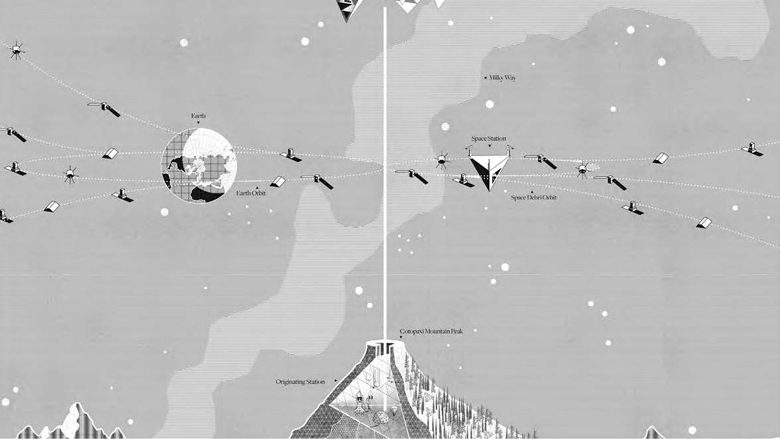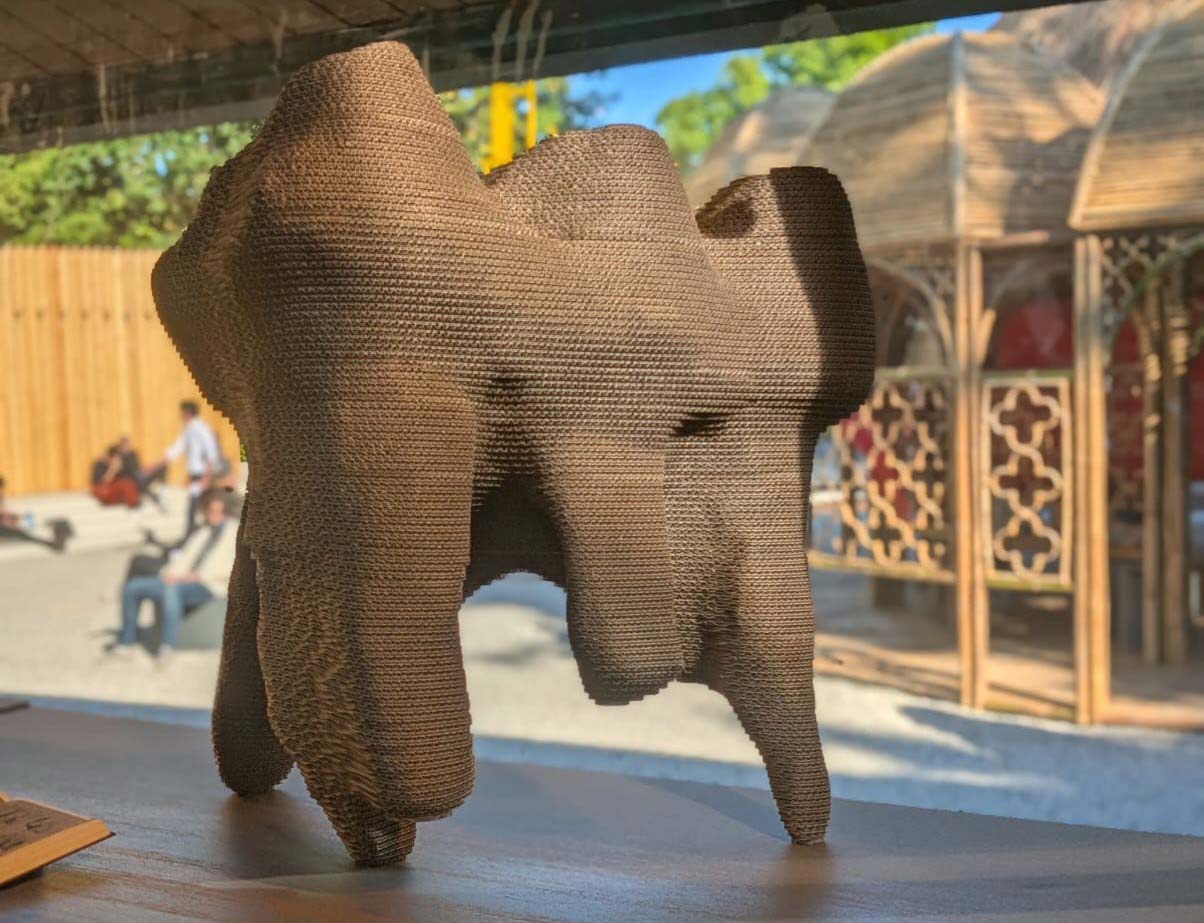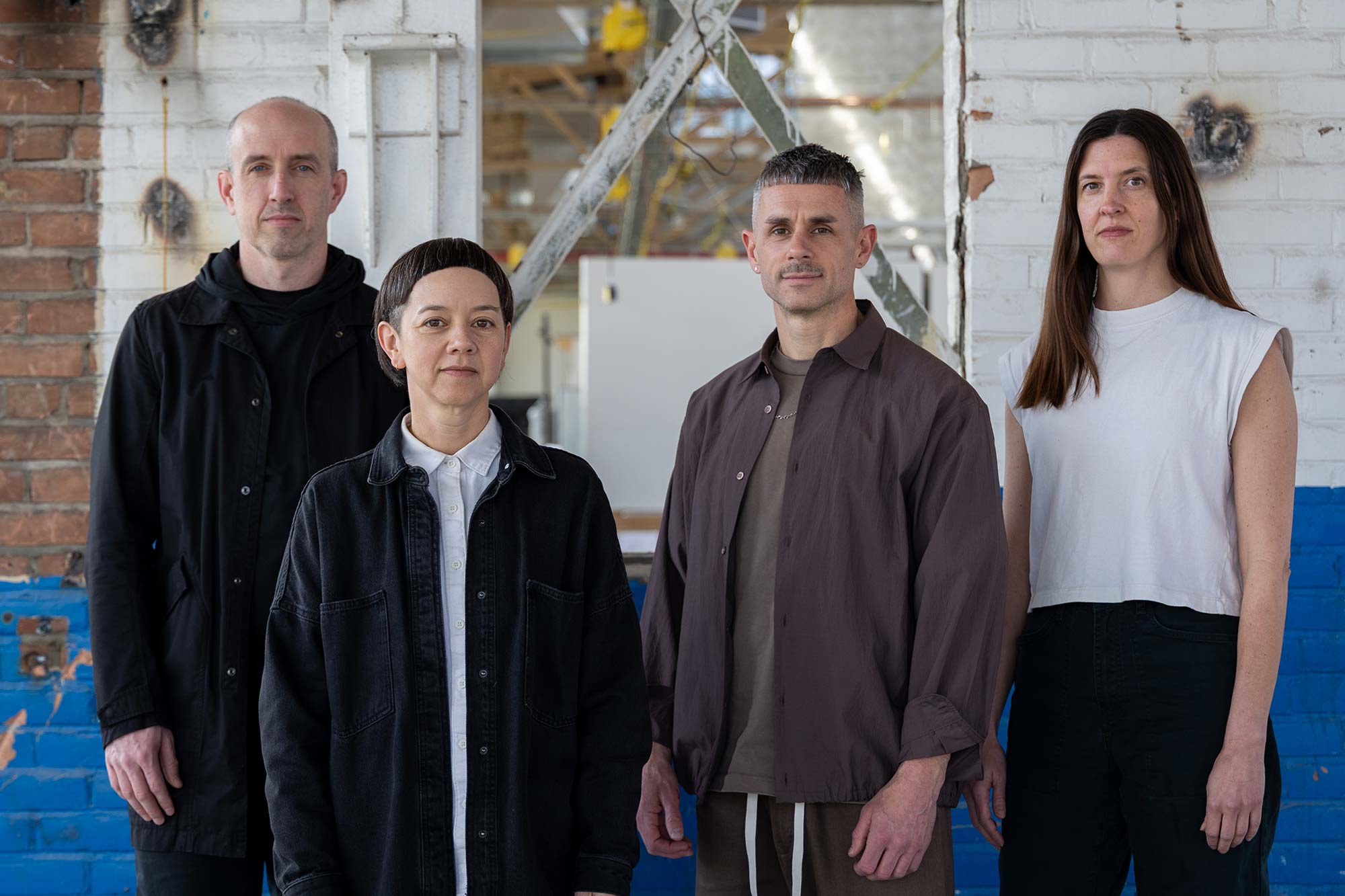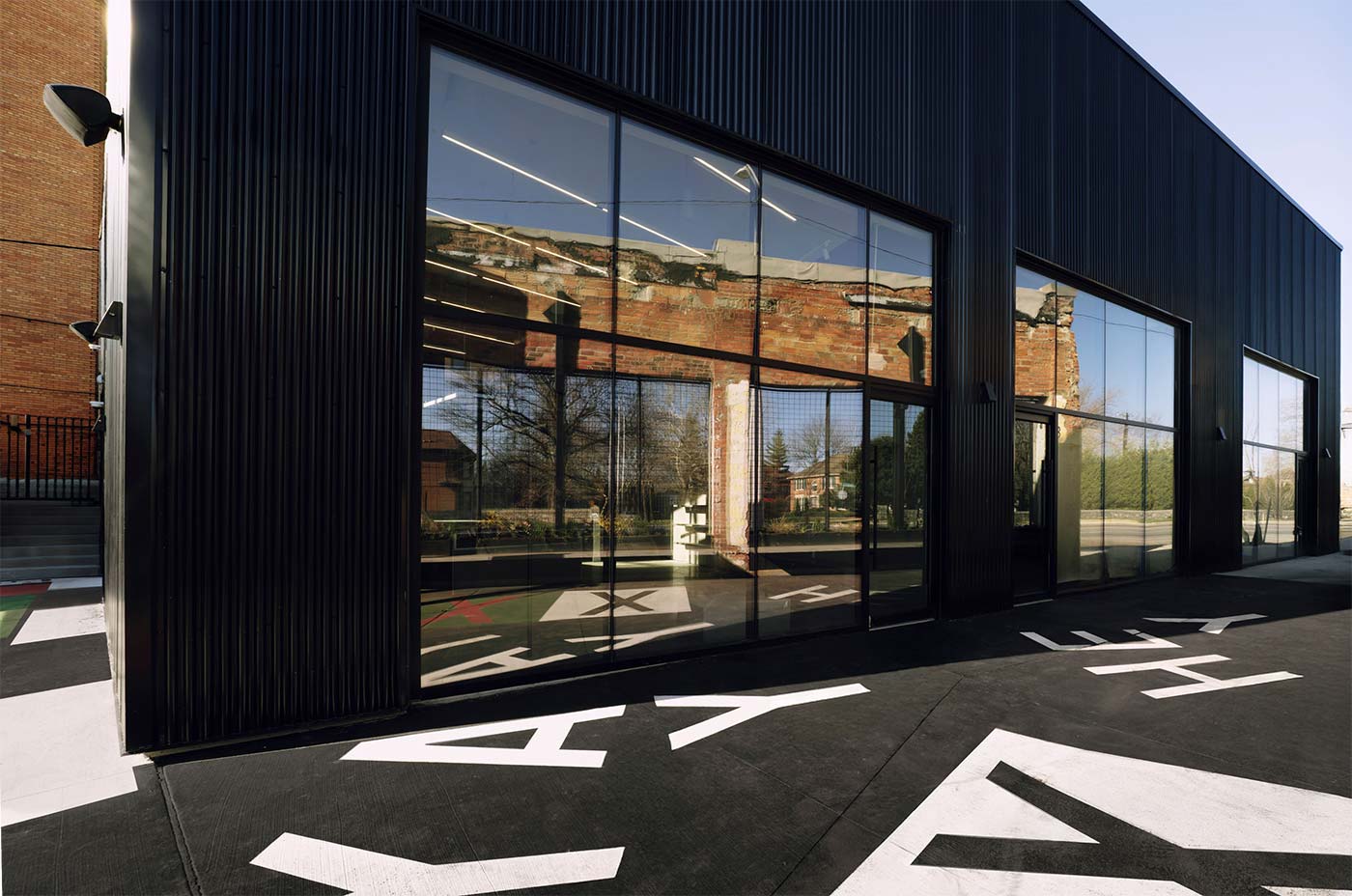
El Hadi Jazairy Awarded First Place Prize for the Jacques Rougerie Competition
El Hadi Jazairy Awarded First Place Prize for the Jacques Rougerie Competition
Assistant Professor El Hadi Jazairy was awarded the First Place prize in the 2015 Jacques Rougerie Competition for his Innovation and Architecture for Space entry, “Neck of the Moon.” The project was co-authored with Rania Ghosn, partner at DESIGN EARTH. The design team includes Jia Weng (M.U.D.’13), Mingchuan Yang (M.U.D.’15), Hsin-Han Lee (M.U.D.’15), Shuya Xu (M.U.D.’15) and Sihao Xiong (M.U.D.’15).
Orbital debris is a significant problem in geostationary orbits, where satellites share an orbital path with space debris. New satellites are launched at an increasing rate each year and most of these launches contribute to Earth’s orbiting junkyard.
The Neck of the Moon project proposes to clean up the orbital environment by compacting targeted space debris into a new satellite planet that orbits the Earth. Rather than displacing the debris to a lower altitude, a large tug with a robotic arm approaches and compacts large objects at high altitudes. In a continuous development from atom to nebula, the compacted mass grows organically into new satellite planet Laika, the earth’s second moon.
An umbilical line ties Laika to the Earth, and more precisely to the belly of the Cotopaxi volcano in Ecuador. The cordon is a space elevator that connects the newly formed planet and supplies it with materials from the earth. It also beams the solar energy captured by Laika to earth. The project’s holistic vision finds in this peak of the earth its best grounding, and the inspiration for the project’s name. It is claimed that Cotopaxi means “Neck of the Moon” in an indigenous language.
For more information on Neck of the Moon and the Jacques Rougerie Competition, visit the Institute de France website: http://http://www.institut-de-france.fr/remise-prix-fondation-jacques-rougerie-2015, or Design Earth website: http://design-earth.org/projects/neck-of-the-moon/









